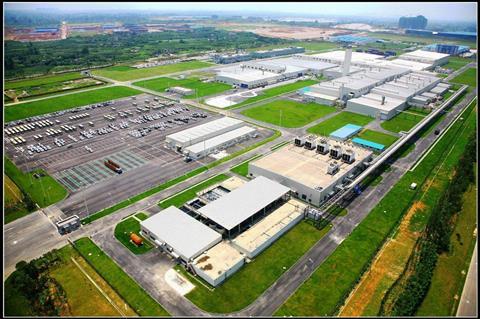Carmaker Toyota and electronics supplier Foxconn are among companies that have been forced to shut down their operations in China’s Sichuan province because of a heatwave that has prompted a water and electricity supply crisis.
The region has seen record temperatures, higher than any for 60 years, which has resulted in shortage of power supply because drought conditions have impacted hydroelectricity production.

The average maximum temperature in Sichuan during August, the region’s hottest month, is 30°C. However, temperatures reached a high of 40°C on August 15 this year, with temperatures in excess of 35°C set to continue for a week until August 24, when it is set to finally drop.
An initial six-day closure has now been extended to run until August 25, having been set to end on August 22. Drought across the whole of China has seen additional power shortages also beginning to affect Shanghai, where The Bund skyline will not be illuminated for two nights to save energy.
To maintain residential supply, factories in 19 out of 21 cities in Sichuan have been ordered to close, disrupting the supply of semiconductors, lithium and automotive parts. As of August 19 aluminium production had been curtailed by 770,000 megatonnes across the region due to the shutdowns.
Sichuan is a major production and supply centre, and includes vehicle production plants from other OEMs including Geely, Volvo Cars, FAW Volkswagen and Great Wall.
A crucial factor in the crisis is drought, which has already led to closures for freight on the River Rhine in Germany, impacting automotive and vehicle cargo. Sichuan relies on hydroelectricity for over 80% of its power and with rivers running low, production is significantly down. As a consequence of increased demand for power that comes with extreme temperatures (for refrigeration and air conditioning), rationing has been put in place to ensure domestic supply. Household demand for electricity has increased 93.3% during the heatwave.
The two cities excluded from the shutdown order are spared for very different reasons. Panzhihua has a gigantic mining operation, especially for big deposits of vanadium, cobalt and coal. It is a major producer of hydroelectricity and highly industrialised. By contrast, Liangshan Yi has also been excluded because the autonomous region is still extremely remote, made up of mountain villages and has little industry despite an extensive passenger and freight rail network.
Global supply chain impacts
Toyota and Foxconn have confirmed that they have been forced to shut down their Sichuan factories this week. Battery cell manufacturer CATL has also halted production at its Sichuan factory, as reported by Chinese media. All facilities have been ordered shut from Monday 15 August through Saturday 20 after Sichuan authorities said they would cut off electricity supply during the six-day period.
Some companies from the region have been keen to minimise the impact of the shutdown, saying that it will not significantly impact supply. According to Global Times, semiconductor supplier BOE Technology said that it would operate a lower-powered assembly line but continue to run its factory. Volkswagen has also reported minimal disruption.
Despite this assurance that production will continue and some sectors in Sichuan (displays and consumer electronics) having substantial inventories to clear, it is estimated that 50-60% of production will be affected.
That includes an estimated 1,200 tonnes of lithium. Lithium carbonate prices across China have spiked, as a result, as Sichuan is the hub for production in the country. Prices are already extremely high, having increased by 434% in 2021 and doubled again in the last three months.
Chinese automotive sector analysts have suggested the impact on Geely and Great Wall Motors’ plants in Sichuan may be minimal as August is a quiet month for the automotive market. However, coming at the end of a long stint of quiet months (and with more surely set to come) this disruption is further delaying the recovery of production capacity lost during the Covid pandemic shutdowns.
Water shortages to last
Climate change has caused low rainfall across Europe and Asia, as well as high temperatures. The heat means that thermals over land areas do not allow rain to condense and fall, so it instead falls into lower temperature areas over the sea.
This is the reverse of the water cycle’s normal function, where the higher-moisture area of the oceans would evaporate more for water to fall on land and is part of extensive changes expected to happen in the next decades. Nasa’s Grace water monitoring project predicts that by 2025 half the world’s population would live in ‘water-stressed’ areas.

























![Global[1]](https://d3n5uof8vony13.cloudfront.net/Pictures/web/a/d/s/global1_726550.svgz)













No comments yet